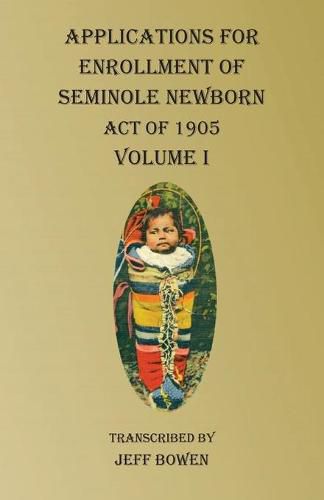Readings Newsletter
Become a Readings Member to make your shopping experience even easier.
Sign in or sign up for free!
You’re not far away from qualifying for FREE standard shipping within Australia
You’ve qualified for FREE standard shipping within Australia
The cart is loading…






This title is printed to order. This book may have been self-published. If so, we cannot guarantee the quality of the content. In the main most books will have gone through the editing process however some may not. We therefore suggest that you be aware of this before ordering this book. If in doubt check either the author or publisher’s details as we are unable to accept any returns unless they are faulty. Please contact us if you have any questions.
These applications represent one component of the larger body of applications for Enrollment of the Commission to the Five Civilized Tribes, 1898-1914 (Dawes Commission). The term newborn referred to each Seminole individual living within a qualified household who was four years of age or less and not an orphan–up to the time that the President awarded the land allotments. Under this definition each Seminole newborn was to receive 40 acres of Indian Territory. The applications found in National Archive Film M-1301, Rolls 401-402 and transcribed in this series contain more information and establish family relationships not found on the census cards in National Archive film M-1186, the basis for the seminal title Final Rolls of Citizens and Freedmen of the Five Civilized Tribes in Indian Territory [and] Index to the Final Rolls.
According to language of the Dawes Commission found on the National Archives microfilm, On May 1, 1905, as previously announced, an office was opened for the enrollment of children at Wewoka, Indian Territory the tribal capital. The office was maintained until midnight June 2, and applications for the enrollment of 414 children received. Of this number, 270 were children by blood of the Seminole Nation and 144 were children of Seminole freedmen. Two hundred applications of the former class have been approved by the Commission and the names of the applicants included upon a schedule transmitted for department approval on June 28. The remaining applications will be passed upon as rapidly as possible … . Unlike the case of the Creek and Cherokee, who resisted various provisions of the Dawes Allotment Act because it purported to dissolve the Five Civilized Tribes as social units, Seminole enrollment was a relatively simple matter following the tribe’s willingness to work with the Dawes Commission as early as 1898.
The transcriptions include all correspondence associated with successful Seminole claimants. The applications include the names of parents, doctors, lawyers, midwives, and other Seminole relatives whose identities were divulged as part of the application process. In all, researchers will find thousands of Seminole connections in the name indexes to the books.
$9.00 standard shipping within Australia
FREE standard shipping within Australia for orders over $100.00
Express & International shipping calculated at checkout
This title is printed to order. This book may have been self-published. If so, we cannot guarantee the quality of the content. In the main most books will have gone through the editing process however some may not. We therefore suggest that you be aware of this before ordering this book. If in doubt check either the author or publisher’s details as we are unable to accept any returns unless they are faulty. Please contact us if you have any questions.
These applications represent one component of the larger body of applications for Enrollment of the Commission to the Five Civilized Tribes, 1898-1914 (Dawes Commission). The term newborn referred to each Seminole individual living within a qualified household who was four years of age or less and not an orphan–up to the time that the President awarded the land allotments. Under this definition each Seminole newborn was to receive 40 acres of Indian Territory. The applications found in National Archive Film M-1301, Rolls 401-402 and transcribed in this series contain more information and establish family relationships not found on the census cards in National Archive film M-1186, the basis for the seminal title Final Rolls of Citizens and Freedmen of the Five Civilized Tribes in Indian Territory [and] Index to the Final Rolls.
According to language of the Dawes Commission found on the National Archives microfilm, On May 1, 1905, as previously announced, an office was opened for the enrollment of children at Wewoka, Indian Territory the tribal capital. The office was maintained until midnight June 2, and applications for the enrollment of 414 children received. Of this number, 270 were children by blood of the Seminole Nation and 144 were children of Seminole freedmen. Two hundred applications of the former class have been approved by the Commission and the names of the applicants included upon a schedule transmitted for department approval on June 28. The remaining applications will be passed upon as rapidly as possible … . Unlike the case of the Creek and Cherokee, who resisted various provisions of the Dawes Allotment Act because it purported to dissolve the Five Civilized Tribes as social units, Seminole enrollment was a relatively simple matter following the tribe’s willingness to work with the Dawes Commission as early as 1898.
The transcriptions include all correspondence associated with successful Seminole claimants. The applications include the names of parents, doctors, lawyers, midwives, and other Seminole relatives whose identities were divulged as part of the application process. In all, researchers will find thousands of Seminole connections in the name indexes to the books.